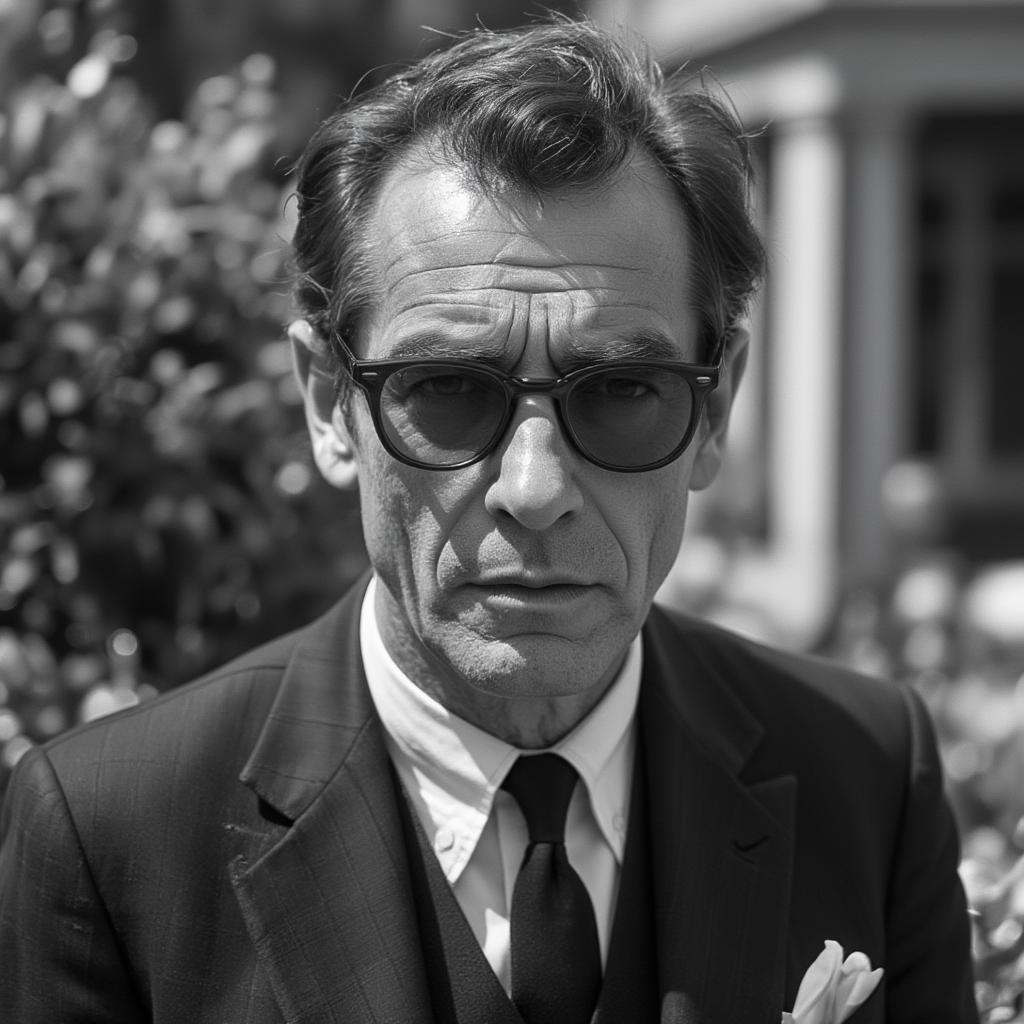A Cure for Wellness: Unpacking the Mystery Behind the Movie & Our Obsession

We’ve all been there, scrolling through streaming services, searching for something that grips us, something that’s a little off-kilter. If you’ve ever stumbled upon A Cure for Wellness, you know exactly what kind of unsettling and visually stunning journey I’m talking about. This isn’t your typical horror flick; it’s a psychological thriller that dives deep into the murky waters of human vulnerability and our desperate search for health and vitality, a topic that resonates more deeply today than ever before.
What Makes A Cure for Wellness So Hauntingly Alluring?
A Cure for Wellness isn’t just a film; it’s an experience. The film follows the story of Lockhart, an ambitious executive who is sent to retrieve his company’s CEO from a remote “wellness center” in the Swiss Alps. But what seems like a simple task quickly spirals into a nightmare as Lockhart discovers that the center is anything but a sanctuary. What begins with a sense of unease quickly morphs into pure, unnerving dread.
The film’s visuals are undeniably captivating. The austere yet beautiful setting of the gothic castle-turned-sanatorium, with its seemingly serene surroundings, is a powerful juxtaposition to the dark secrets hidden within its walls. The cinematography is meticulous, creating a sense of claustrophobia and unease, even in the most expansive shots. This masterful visual language adds layers to the story, amplifying the film’s unsettling atmosphere.
“The true genius of A Cure for Wellness lies in its ability to tap into our deepest fears about control, manipulation, and the vulnerability of our bodies and minds,” observes Dr. Eleanor Vance, a specialist in cinematic psychology. “The film doesn’t just show us horror; it makes us feel it, right down to our bones.”
Decoding the Themes: More Than Just a Psychological Thriller
Beyond the suspense and visual spectacle, A Cure for Wellness delves into profound thematic territories. It’s not just about a creepy sanatorium; it’s a commentary on our modern obsession with wellness and the dark side of seeking perfection. The film examines how the pursuit of health can become a dangerous trap, especially when fueled by societal pressures and a fear of mortality.
- The Illusion of Control: The patients at the wellness center are seeking to control their health and bodies, yet they are ultimately trapped and controlled by the institution itself.
- The Corruption of Power: The film highlights how easily institutions can become corrupted by those who seek to exploit our vulnerabilities.
- The Fear of Aging and Mortality: Our culture’s obsession with staying young and healthy is explored, showcasing how this fear can be manipulated.
- The Nature of Reality: The film blurs the line between reality and hallucination, challenging the audience to question what they see and believe.
Is it a Horror Film or Something Deeper?
Many classify A Cure for Wellness as a horror film, and while it definitely has elements of horror, its power lies more in its ability to make us uncomfortable and question our realities. The film is less about jump scares and gore and more about creating a palpable sense of dread and paranoia.
This makes the film a slow-burn thriller, carefully building its atmosphere, which makes it perfect for those who enjoy stories that really get under their skin. Unlike traditional horror films with clear-cut monsters, A Cure for Wellness explores the monstrous potential within human nature.
Why is A Cure for Wellness Relevant Today?
In a world obsessed with wellness trends, health influencers, and the constant push for self-improvement, A Cure for Wellness resonates with a deeper meaning. The film serves as a cautionary tale, reminding us that wellness, when taken to an extreme, can become its own form of illness. It also questions the motives of those who profit off our fears and insecurities. The film’s message of questioning authority and being aware of manipulation holds relevance in a society where we are constantly bombarded with information.
“The themes explored in A Cure for Wellness are particularly relevant today,” says Professor Alistair Finch, a specialist in social commentary in film. “We are living in an age of ‘wellness’ as a commodity, and the film serves as a sharp reminder to question the narratives being sold to us.”
The Film’s Impact on the Genre
A Cure for Wellness isn’t just another entry in the horror genre; it pushes its boundaries. It utilizes its beautiful yet unsettling aesthetics to create a profound sense of psychological dread, proving that a movie doesn’t need excessive gore to be terrifying. It has set a new standard for visual storytelling in the genre, using cinematography and atmosphere as powerful tools. This film has undoubtedly influenced a new wave of psychological thrillers that prioritize atmosphere, character, and thematic depth.
Questions We Still Ask About A Cure for Wellness
Even after watching the film multiple times, many questions linger. The ambiguity of the film is part of its appeal, leaving viewers to interpret the narrative in their own ways.
- What is the true nature of the wellness center? Is it a real medical institution or something far more sinister?
- What exactly is the “cure” being offered? Does it truly rejuvenate or does it have a darker purpose?
- What happened to Lockhart after the ending? Does he escape or remain trapped?
- What is the significance of the eels? These mysterious creatures appear frequently in the film and add to the unsettling atmosphere.
Exploring the Influence of A Cure for Wellness on Popular Culture
The film’s influence extends beyond the realm of cinema. The visual style and the haunting themes have made their way into other areas of pop culture, such as music videos, fashion editorials, and even video games. Its unique blend of beauty and darkness has resonated with many artists and designers, making it a timeless piece of art.

The film’s exploration of control, obsession, and the dark side of the human psyche has contributed to the broader cultural conversation about our relationship with health and wellness. It serves as a reminder to remain vigilant and to question the narratives being presented to us.
Final Thoughts on A Cure for Wellness
A Cure for Wellness is a film that demands attention. It’s a visual masterpiece that challenges our perceptions of reality and delves deep into our deepest fears and insecurities. The film’s captivating aesthetic, combined with its thought-provoking themes, ensures that it is a cinematic experience that will stay with you long after the credits roll. It is more than just a film about a creepy wellness center; it’s a reflection of our own obsessions and the dangerous paths they can lead us down, a true testament to the power of the psychological thriller and a relevant commentary on our modern world’s relationship with “wellness.” If you’re searching for a film that is both visually stunning and intellectually engaging, look no further than A Cure for Wellness.
Frequently Asked Questions About A Cure for Wellness
- Is A Cure for Wellness a horror movie? While it contains horror elements, it’s more accurately a psychological thriller, focusing on atmosphere and dread rather than jump scares.
- What are the main themes explored in A Cure for Wellness? The film explores themes of control, manipulation, the fear of aging, and the dangerous side of our obsession with wellness.
- Why is the film so visually appealing? The film uses carefully crafted cinematography, set design, and a unique visual language to create an unsettling and captivating experience.
- Is the wellness center in the film real? No, the wellness center is fictional, created as a symbolic representation of the dark side of the pursuit of health.
- What is the significance of the eels in the film? The eels are a recurring motif, adding to the unsettling atmosphere and representing the hidden depths of the sanatorium.
- Why do some people find the movie confusing? The ambiguity and surreal elements of the film leave it open to interpretation, which can be confusing for some viewers.
- How does A Cure for Wellness relate to our current obsession with wellness? The film serves as a cautionary tale, highlighting how the desire for health can become a dangerous obsession when taken to an extreme.
- Who is the director of A Cure for Wellness? The film was directed by Gore Verbinski, known for his visually rich and unconventional storytelling.
- Is there a sequel to A Cure for Wellness? As of right now, there is no sequel planned for A Cure for Wellness.




